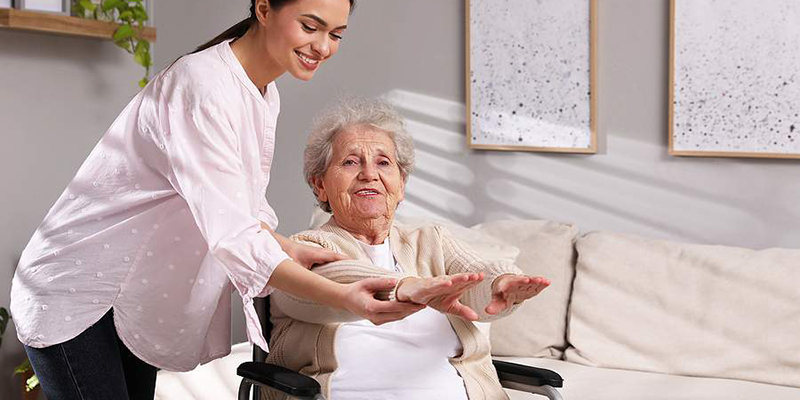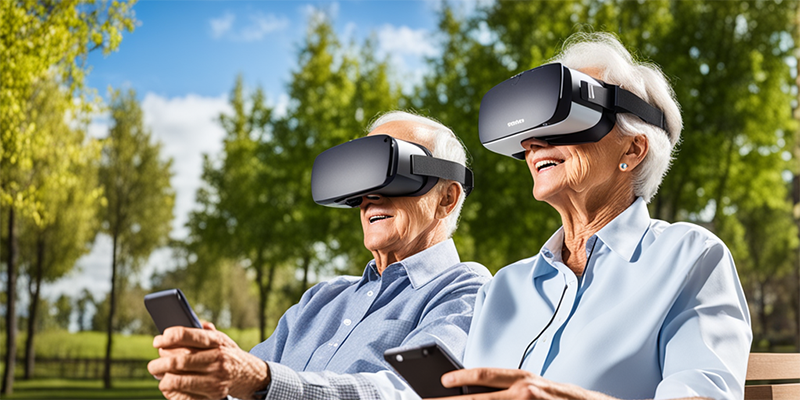Innovations And Trends In Senior Healthcare
Let's confront the truth - growing older is not what it used to be. During older times, growing older meant living a restricted life with poor mobility, routine checkups with different doctors, and minimal social interaction. The world's population is leading healthier, happier, and longer lives thanks to rapid advancements in technology, medicine, and AI. Senior care is changing, and it is time we took a closer look. From robotic companions to AI diagnostics, older adults are cared for differently.
Let's confront the truth - growing older is not what it used to be. During older times, growing older meant living a restricted life with poor mobility, routine checkups with different doctors, and minimal social interaction. The world's population is leading healthier, happier, and longer lives thanks to rapid advancements in technology, medicine, and AI. Senior care is changing, and it is time we took a closer look. From robotic companions to AI diagnostics, older adults are cared for differently.

Importance Of Advancements In Elderly Care Solutions
According to the World Health Organization, the population of 60 and above is expected to double to 2.1 billion by 2050. This is not just a number but a call to action for all of us. The existing healthcare systems that focus on acute symptoms are failing to provide adequate care for chronic conditions like diabetes, heart disease, and dementia. On top of that, they are unsustainable without nurses and skilled older caregivers. As a society, we require better alternatives that are easy to implement and intelligent.
This is where technology comes in. Creating new theories doesn't just have to change how we think; it should also change how we age and care for our elderly. Technology focuses on re-imagining what ageing is and how it should work. Let's check out some changes to assist seniors and their families.
Telehealth: Bring the Doctor’s Office Home
You aren't alone if you recall that a typical checkup involves long hours getting stuck in traffic or cramped waiting rooms filled with infectious germs. Telehealth works differently. Thanks to Teladoc and Amwell, seniors are now connected with their doctors via video calls, which lowers the Stress for people residing in rural areas and having mobility constraints.
It's not merely about convenience, as telehealth provides special tools for doctors to track health, like wearables for ECG patches and Bluetooth-enabled cuffs to monitor blood pressure. A 2022 CDC study revealed that proactive approaches such as remote monitoring saved heart failure patients from being readmitted to hospitals 38% of the time. For elderly patients who struggle to manage chronic ailments, this is not just life-changing—it is a crucial matter of survival.
AI and Machine Learning: Forecasting Issues Ahead of Onset
AI is not just responsible for self-driving vehicles but is a vital basis for orthopaedic preventive care. With the help of machine learning algorithms, massive datasets such as medical records are analyzed to predict risks such as falls, strokes, or cognitive decline. For instance, FallCall Solutions has AI-enabled phones that detect falls and immediately inform caregivers. BioAge Labs is attempting to identify biomarkers of ageing with AI so we can formulate drugs that slow or reverse the age-related decline.
However, AI is not replacing doctors. It is enhancing their abilities. In a study that examined Alzheimer's patients through process introspection, AI outperformed humans in diagnosis. Early detection means years of independence without intervention.
Smart Homes: Places to Grow Old Just Became More Advanced
For many seniors, the centre of their lives is chasing the goal of 'ageing in place,' and smart home tech is advancing fast. A medication reminder and a household thermostat that adjusts temperature based on your preferences serve as a glimpse into the future. Detecting gas leaks before they become a dire issue is a game-changer.
Businesses such as Lively utilize sensor technology to monitor daily routines like bathroom usage and fridge access while notifying families in case of any irregularities. Moreover, voice assistants like Alexa are becoming more advanced by adding features like medication reminders and emergency calls. Even flooring is becoming more innovative. For example, Marpatt Metropolis uses pressure-sensitive flooring to detect falls without cameras.
Robotics: Companionship Meets Practical Support
Robotic aides in elderly care, once a science fiction concept, are now a reality. These machines are closing the gaps in elderly assistance, ranging from exoskeletons that enable older people to walk to social robots aimed at helping with loneliness.
Consider PARO, a robotic seal designed for therapeutic use in dementia patients. Research indicates it assists in reducing anxiety while improving mood much better than standard live animal therapy. And functional mobility? Consider the Toyota Human Support Robot, an aide capable of getting needed objects, opening curtains, and doing simple chores. Exoskeletons, like ReWalk, empower stroke survivors by enhancing their walking ability.
Personalized Medicine: Treatments Tailored to You
The days of “one-size-fits-all” healthcare are slowly fading into extinction. Personalized medicine uses genetic tests and biomarkers to develop specialized treatment plans, reducing side effects and producing better results.
For instance, Liquid biopsies, which are blood tests capable of spotting cancer's DNA, are making it possible to detect cancer much earlier and with little intervention in older people. At the same time, pharmacogenomics [or the study of how genes affect response to drugs] enables physicians to give the correct dose of antidepressants or blood thinners to patients using their metabolism.
VR and AR: Boosting Brain and Body VR can benefit seniors, too, as it has uses beyond gaming. Experts argue seniors can participate in social activities, travel, and even exercise without leaving home.

A 2021 JAMA study found that VR therapy reduced chronic pain in older adults. A Rendever platform offers virtual social and travel events to seniors with difficulty moving. Meanwhile, AR applications facilitate the performance of physical therapy exercises at home.
The Bigger Picture: Challenges and Ethical Questions
Excitement isn’t the only thing that comes with innovation, for example:
Cost: An endless list of technologies like exoskeletons or gene therapies sounds excellent, but it makes us wonder who can afford it all. Insurance certainly does not.
Accessibility: Forget elderly participants of teleseminars; the low internet coverage among rural seniors is shocking.
Privacy: Who owns the information from health trackers? Can AI systems, which hold so much personal information, be trusted?
Human Touch: Can the warmth of a caring human be programmed into a robot?
None of these questions are easy, and there are not sufficient resources. However, tech developers, health providers, and policymakers must work together to ensure that equity and ethics keep pace with innovation.
What’s Next for Seniors?
Integration of AI and tech is undoubtedly the way of the future. Envision how your smartwatch seamlessly communicates with your AI doctor, who can modify your medicine, and a hyper-intelligent robot reminding you to drink water. We are already witnessing:
AI-Driven Drug Discovery: Insilico Medicine has begun developing AI-based anti-ageing drugs.
Brain-Computer Interfaces: Elon Musk's Neuralink is working mobility and memory recall for patients with neurodegenerative disorders.
Global Aging Innovations: The WHO’s Decade of Healthy Aging is focused on technology-driven, person-centric care.
For many seniors, their caregivers, and family members, this means more than just additional years—it means added life. The objective is not merely to prolong existence but to animate it and live fully, with independence, enthusiasm, dignity, and joy.